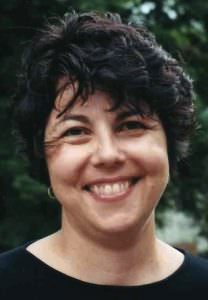Writer/Director Jane Schoenbrun on Their Stunning New Film “I Saw the TV Glow”
While a student at Boston University, writer/director Jane Schoenbrun enjoyed “many formative movie experiences” at the nearby Coolidge Corner Theater. “A fond memory is of a zombie movie and me and all my friends dressing in zombie makeup,” says Schoenbrun. “It was one of the happiest memories of my college experience, and it probably says something about me.”
So it’s a fitting, full circle moment for Schoenbrun when they returned to the historic Boston theater on May 11 as the 2024 recipient of the Coolidge Breakthrough Artist Award. The filmmaker introduced their latest film, I Saw the TV Glow and and participated in a post-screening Q&A before the awards event. I Saw the TV Glow was released by A24 nationally on May 17.
I Saw the TV Glow was one of this year’s Sundance Film Festival’s breakout films. It’s a more ambitious but no less original follow-up to Schoenbrun’s haunting 2021 feature We’re All Going to the World’s Fair, about a lonely teenage girl who creates videos as part of a creepy online challenge and falls down a horror rabbit hole. I Saw the TV Glow is a surreal coming-of-age horror film starring Justice Smith and Brigette Lundy-Paine as teen outcasts Owen and Maddy, who bond over their shared love for a spooky/cheesy TV show called The Pink Opaque until the lines between their suburban reality and TV reality blur, transform, and, eventually, evaporate.

Schoenbrun, who is non-binary, is candid that I Saw the TV Glow expands on themes about trans identity that they first explored in We’re All Going to the World’s Fair. It’s not explicit; Schoenbrun is exploring the emotional and internal response to questions of identity. The horror/supernatural genre is fitting to show the desire to enter a different realm. “I think part of my love of horror, which is different than loving when horrible things happen in real life, obviously, is that it’s a controlled chaos,” says Schoenbrun. “I used to love haunted houses, but I would not love being in an actual house where people are trying to murder me. Part of the joy and thrill of fiction/horror is [it’s] a safe place where the world could be a little different than what everyone else agreed it had to be.”
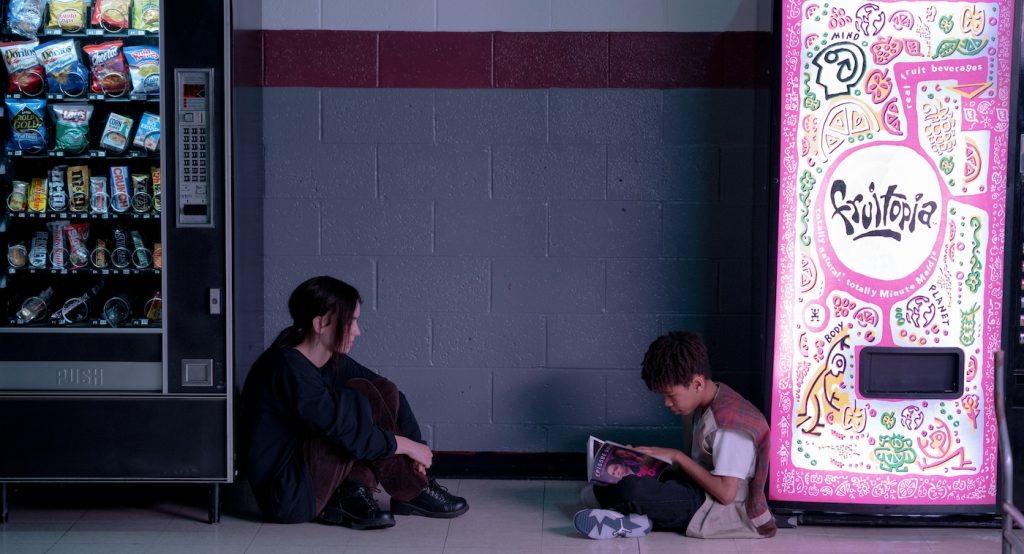
The film’s central TV show, The Pink Opaque — Schoenbrun borrowed the title from a favorite band, The Cocteau Twins, while writing the script with the idea of replacing it later but never found anything better — is modeled on Buffy the Vampire Slayer, the TV show that helped Schoenbrun survive their teen years.
“I and many other queer people naturally gravitated toward genre and shows like Buffy the Vampire Slayer because it’s so gay. It’s not just trying to scare you; it’s so warm and funny. It just feels queer, inviting you to be part of a chosen family that’s very much non-normative,” Schoenbrun says.
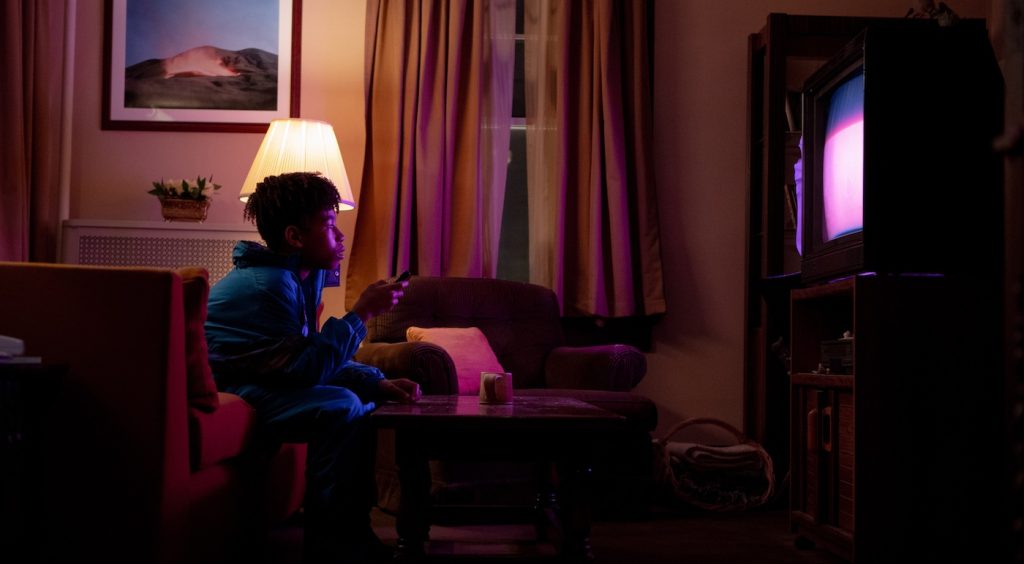
“I found pretty much from birth that I was drawn to things I found morbid or scary or nocturnal. My movies are strange in that they’re not necessarily straight-up horror films; they’re not content in playing genre cues. They are more films about the love of horror and genre films, and that is something I know really well as a child of suburbia and video stores of the 1990s. I spent so much time raiding the horror shelves and watching everything I could get my hands on. I find this hard to explain to people who dislike horror movies, but there is something so beautiful and comforting about getting scared, about entering these words that were certainly darker or stranger than the worlds I was inhabiting during the daytime.”
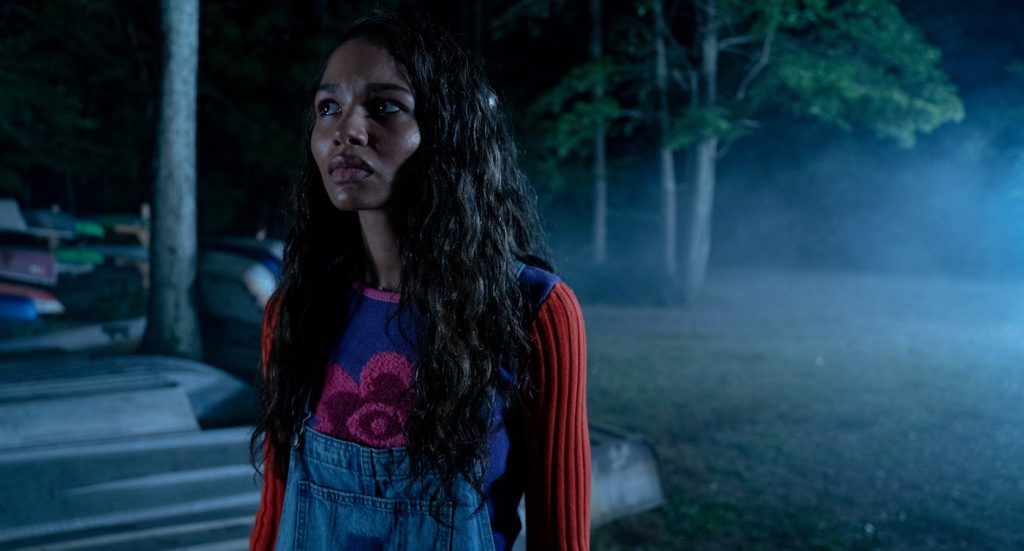
Besides Buffy the Vampire Slayer, Schoenbrun’s influences include SNICK on Nickelodeon in the early 1990s, a block of kids’ programming that ran on Saturdays from 8 to10 p.m. before, as one of the characters says in I Saw the TV Glow, “It switches over to black and white reruns for old people.”
“I’d look forward to it all week, and Saturday night was a little ritual for me; like, don’t interrupt me while I’m watching those two hours. It was like church, giving myself over to the experience and disappearing into the television,” says Schoenbrun.
There was also a show called Are You Afraid of the Dark?, which the filmmaker calls a “kid’s version of Twilight Zone or Night Gallery or Tales from the Crypt since it was often too scary for kids and would haunt my nightmares. When I got a little older, my best friend in fifth grade and I, over the course of two weeks, rented every Nightmare on Elm Street movie at the video store. Scream was another big one for me that I probably saw too young. The list goes on; it’s not a short list.”
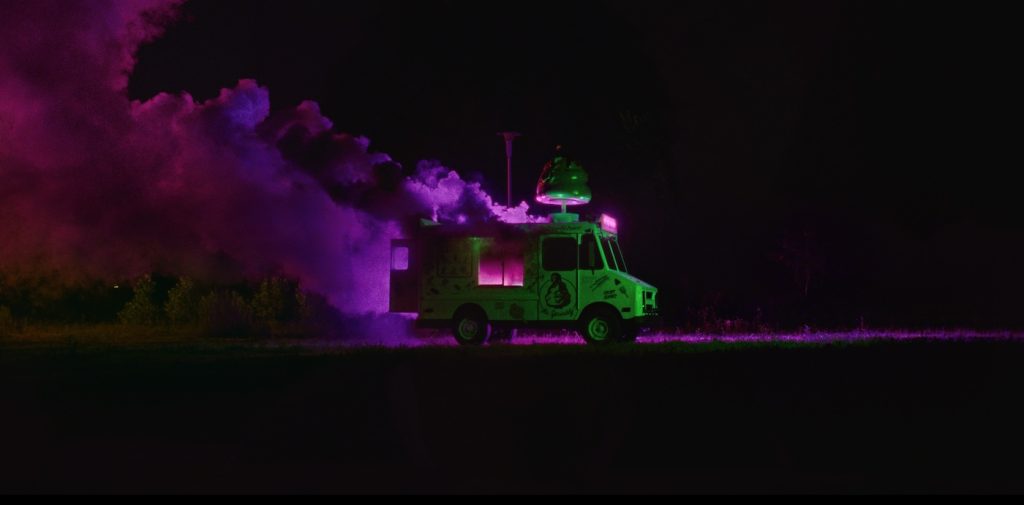
Schoenbrun will continue to burrow into the “darker spaces” of their first two films with a third feature, “which is very much about coming into yourself in a post-transition realm” that they expect to shoot next year.
“World’s Fair and TV Glow are about transness but not transition,” Schoenbrun says. “World’s Fair is about searching for the language; TV Glow is about what the trans community calls the ‘egg crack’ or the moment you first see yourself as trans in a way that’s unavoidable or that you can’t continue to hide or repress. But the process of transition is its own huge journey. Just as TV Glow evolved out of World’s Fair, another project evolved from both about the process of closing the gap between the person you feel like and the person you are.”
Schoenbrun last year wrote the first novel of a planned trilogy and expects to finish the second after the I Saw the TV Glow press tour concludes.
“It’s a fantasy epic [about] hundreds of years and lots of dimensions. It came out of an intense period of months where, by the end of the process, I had essentially written an epic in my brain. I want to bring it to screen in some form, but I felt that I first needed to get it out on the page before adapting it because it would cost a lot of money,” says Schoenbrun. “I think it will always be the case that my work will be inspired by whatever journey I’m on in my life, which is not uncommon for an artist. But I’m trying to interrogate it in real-time. I’m excited to [now] make work about becoming yourself.”
Featured image: L-r: Justice Smith and Brigette Lundy-Paine in “I Saw the TV Glow.” Courtesy A24.


